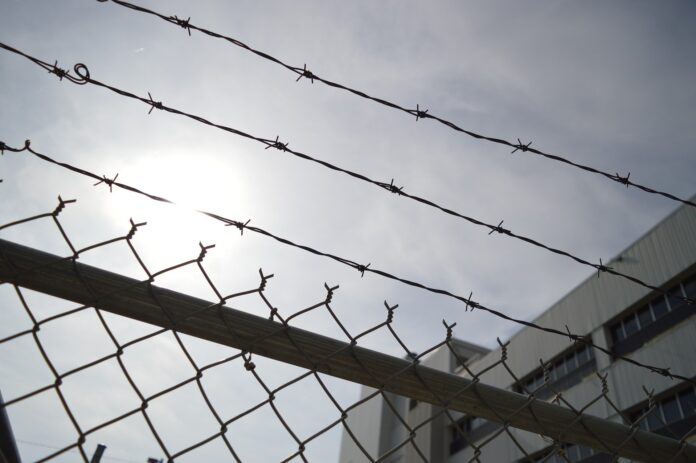MONTGOMERY, Ala. – Governor Kay Ivey and the Alabama Department of Corrections (ADOC) on Thursday announced the successful developer teams who submitted proposals in May in response to the ADOC’s Request for Proposal (RFP) to improve the state’s prison infrastructure. An Evaluation Committee comprised of stakeholders from the ADOC and Alabama Department of Finance, including the Division of Construction Management, conducted a thorough evaluation of the proposals submitted by pre-qualified Developer Teams, and subsequently made award recommendations to ADOC Commissioner Jeff Dunn.
The ADOC intends to enter into negotiations with the following Developer Teams to construct new facilities at the following proposed sites:
- Facility One: Alabama Prison Transformation Partners (Star America; BL Harbert International; Butler-Cohen; Arrington Watkins Architects; and Johnson Controls, Inc.) with a proposed site located near AL-139/CR-2 in Bibb County.
- Facility Two: CoreCivic (CoreCivic; Caddell Construction; DLR Group; and R&N Systems Design) with a proposed site in Elmore County (multiple locations under review; proposed site to be shared at a later date).
- Facility Three: CoreCivic (CoreCivic; Caddell Construction; DLR Group; and R&N Systems Design) with a proposed site located near Bell Fork Road in Escambia County.
“The Alabama Prison Program is vital for the long-term success of our state and communities. We all – legislators, advocates, and taxpayers, alike – can and should agree that we must rebuild Alabama’s correctional system from the ground up to improve safety for our state’s correctional staff and inmate population, and we must do it immediately,” Ivey said. “Given the failing state of the ADOC’s existing infrastructure and that the Department already is faced with more than $1 billion in deferred maintenance costs alone, pursuing new construction without raising taxes or incurring debt is the fiscally sound and responsible decision. I am pleased with the integrity of this procurement process thus far and look forward to continuing to work closely with the legislature as we comprehensively address this intricate and important issue that affects us all.”
The Evaluation Committee previously identified qualified Developer Teams based on the experience and qualifications of the team lead, equity partners, design and construction teams, and service providers, as well as their ability to adequately meet the financial needs of the Alabama Prison Program. The Evaluation Committee provided an assessment of the proposals submitted by the Developer Teams including a review of the proposed lease price and financial plan, as well as a technical evaluation of the proposed design. In evaluating the proposed designs, the Evaluation Committee ensured that the Developer Teams proposed sustainable facilities that are safe, secure, and compliant with the Americans with Disabilities Act, the American Correctional Association’s guidelines, and other nationally recognized standards, with a driving goal to provide evidence-based rehabilitation to all inmates.
It is estimated that the facilities will feature approximately 37% more programming space per inmate, as well as increased educational, training, and recreational/exercise space, which will provide for a more meaningful visitation experience for inmates and their loved ones. Additionally, it is projected that there will be four times more celled spaces than open dorms as compared to our current facilities, which will reduce the potential for violent incidents to occur, enhance safety for both correctional officers and inmates, and improve quality of working conditions for staff.
The procurement process will now enter into a confidential negotiation period to ensure and secure the best possible value for the state. The ADOC intends to negotiate long-term leases for each facility. While the ADOC will operate and staff the facilities, the developer teams will provide infrastructure maintenance and life-cycle replacement for the duration of the lease term. The ADOC expects financial close for the facilities to occur in late 2020, at which time the final financial terms will become publicly available.
The ADOC anticipates construction to begin in early 2021. The Department estimates that construction of the new facilities will create thousands of construction jobs: Facility One (Bibb County) – 2,900 construction jobs; Facility Two (Elmore County) – 3,900 construction jobs; and Facility Three (Escambia County) – 2,800 construction jobs.
“This important benchmark demonstrates meaningful progress against our multi-faceted strategy to transform Alabama’s correctional system and empowers the ADOC to shift to a rehabilitative model,” Dunn said. “It is no secret that the ADOC is facing real, longstanding challenges, most of which are decades in the making and rooted in inadequate, crowded, and structurally failing facilities. Building new facilities that improve safety and security for staff and inmates and allow for effective inmate rehabilitation is the right and only path forward.”
The ADOC also is exploring options surrounding the use of Perry County Correctional Facility in Uniontown as a transitional center for inmates who are preparing to re-enter society, which would be an expansion of contracted services currently provided at the Alabama Therapeutic Education Facility in Shelby County. Providing adequate and evidence-based programming while preparing inmates for re-entry is a critical cornerstone of the Department’s rehabilitation strategy.
In the near future, Ivey will issue an Executive Order establishing the Alabama Prison Repurposing Commission, a multi-disciplinary group comprised of legislators, local government officials, and community representatives appointed to conduct a thorough evaluation of the ADOC’s existing infrastructure. The Commission will make recommendations as to which ADOC facilities should be retained and renovated as major correctional facilities, which could be renovated and repurposed for another use by the ADOC, and which should be repurposed to serve a different purpose, whether by another public entity or the private sector.
Ivey and ADOC leadership have met with legislators and provided public updates throughout the procurement process, beginning with the Expressions of Interest phase in early 2019. The ADOC posted a request for Expression of Interest (EOI) to improve the state’s prison infrastructure on March 27, 2019 and announced the Developer Teams who submitted EOIs on April 18, 2019.
The ADOC issued a Request for Qualifications (RFQ) June 27, 2019. Participation in the RFQ process was mandatory and required interested Developer Teams to respond and submit a Statement of Qualifications (SOQ) by August 26, 2019 to demonstrate the team’s financial capacity and technical expertise. An evaluation committee evaluated the SOQs to identify the developer teams qualified to receive the Request for Proposal (RFP).
In November 2019, Ivey and the ADOC announced the four developer teams that qualified to receive the RFP in December 2019. An addendum to the RFP was issued on April 3, 2020, extending the proposal submission deadline due to the impact of COVID-19.
The proposals were due to the ADOC May 14, 2020 and were opened on May 15, 2020. The public opening was held virtually out of an abundance of caution and in line with Centers for Disease Control and Prevention (CDC) recommendations on COVID-19 as it relates to large public gatherings in enclosed spaces.
Additional information on the timeline of the process thus far:


























